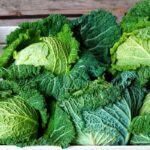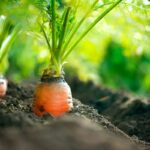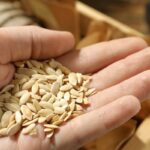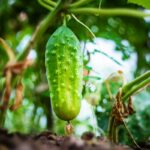Cucumbers, or Cucumis sativus, are a delightful addition to any garden and are relished worldwide for their cool, refreshing taste and multifaceted culinary applications.
However, the joy of biting into a crunchy cucumber, that you’ve nurtured from a tiny seed, depends on knowing the perfect moment to harvest it.
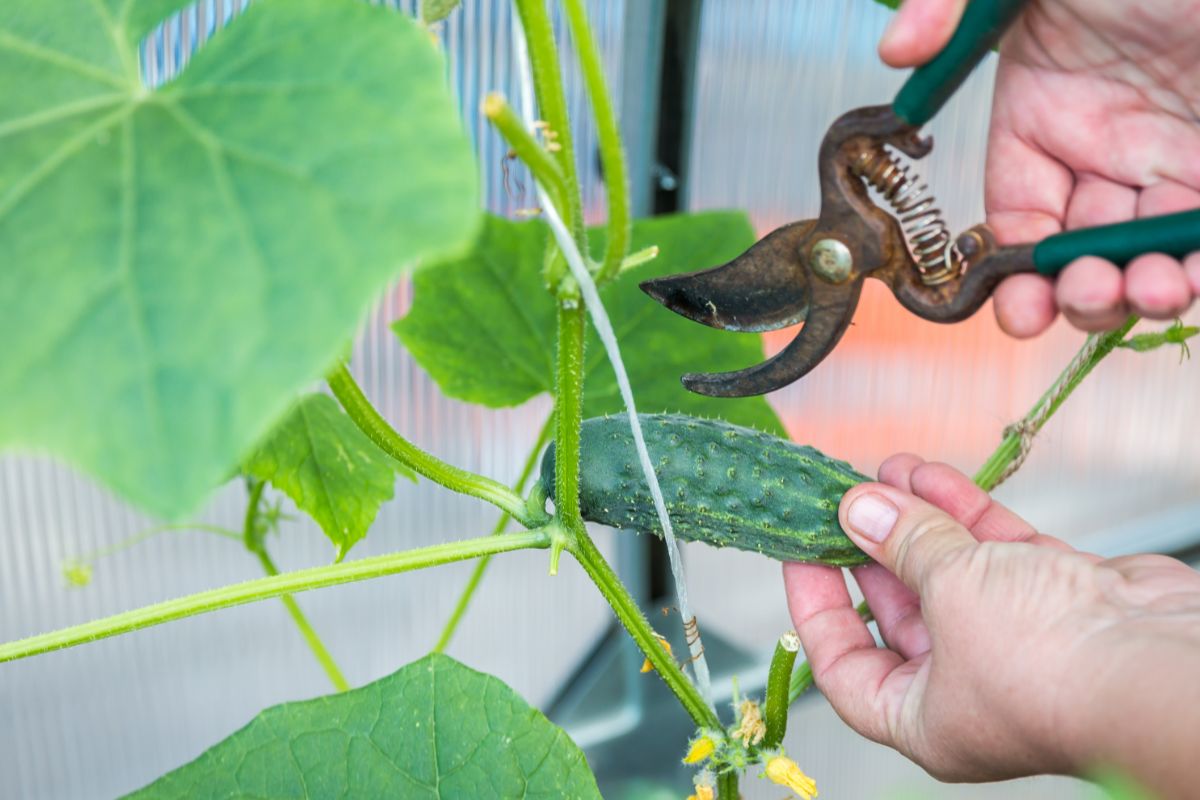
In this guide, I’ll help you understand the various signs of cucumber maturity, when to pick them, and crucially, how to store them post-harvest. Keep reading!
The Best Time To Harvest Cucumbers
There are a few things to consider when it comes to the best time to pick your cucumbers – let’s learn a bit more about the growth stages of cucumbers and understand when they’re ready for harvest.
The Life Cycle Of A Cucumber Plant
A cucumber plant’s life begins as a humble seed, which under the right conditions, germinates within seven to ten days.
As days turn into weeks, these tiny seedlings grow into vibrant green vines, studded with yellow flowers that eventually morph into cucumbers.
Typically, cucumbers are ready to harvest within 50-70 days of planting. But determining the perfect moment to pick them isn’t as straightforward as marking the calendar.
It requires careful observation of various factors like size, colour, and firmness.
Size: An Important Harvest Indicator
Different cucumber varieties grow to different sizes at maturity, and hence, size is a key factor in determining when to harvest.
For instance, slicing cucumbers, commonly used in salads, are ideally picked when they are between six and eight inches long. Pickling cucumbers, destined for jars of homemade pickles, are harvested smaller, around three to five inches.
English or hothouse cucumbers, known for their thin skin and nearly seedless interior, can grow up to a foot long or more.
On the other hand, mini or salad cucumbers are typically harvested at a smaller size, usually two to four inches.
Regardless of the variety, avoid letting cucumbers grow too large. Overgrown cucumbers are likely to have tough skins, large, hard seeds, and a bitter taste, detracting from their palatability.
If your cucumbers are growing in a peculiar shape? It could be an indication that the growing conditions are not quite right.
Colour: A Clue To Cucumber Maturity
Colour is another vital indicator of a cucumber’s readiness for harvest.
Healthy, ripe cucumbers boast a vibrant, dark green colour. Underripe ones may appear a lighter shade of green, while overripe cucumbers often develop yellow or orange spots, signalling they are past their prime.
Cucumbers exhibiting a dull or washed-out colour could be symptomatic of disease or malnutrition.
Firmness And Texture: Touching Upon Maturity
A ripe cucumber should feel uniformly firm from one end to the other. If a cucumber is soft or shows depressions when gently pressed, it might be overripe or rotting.
In terms of texture, the skin of a mature cucumber is relatively smooth but slightly prickly. Overripe cucumbers often develop hard, rough, and bumpy skin that is less enjoyable to eat.
Regular Harvesting: Key To A Continuous Supply
One of the most important things to remember when growing and picking cucumbers is that regular harvesting stimulates the plant to produce more fruit.
Neglecting a mature cucumber on the vine might signal the plant to stop fruit production, focusing instead on seed maturation.
To keep a steady supply of cucumbers, ensure you’re harvesting them every other day or as soon as they reach their optimal size.
Harvest With Care
When it’s time to harvest, use a sharp pair of pruning shears or a knife to cut the cucumber off the vine, leaving a small portion of the stem attached.
Avoid pulling or twisting the cucumber as this can damage the plant and can possibly cause the fruit to bruise.
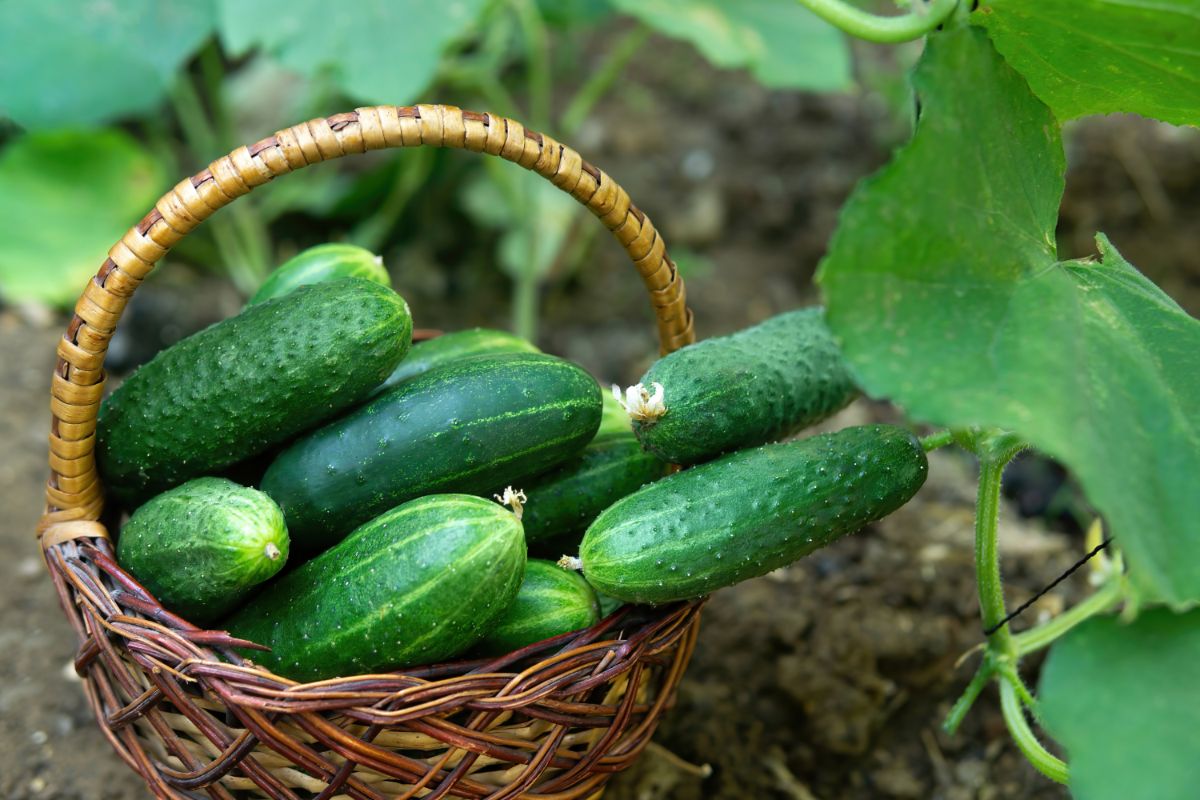
Storing Your Harvested Cucumbers
Cucumbers are best eaten fresh, as soon as they’ve been picked. However, if you need to store them, place them in a cool, well-ventilated area.
Unlike many fruits and vegetables, cucumbers are sensitive to temperatures below 10°C and may suffer from “chilling injuries” if stored in a standard refrigerator for too long, leading to water-soaked areas, pitting, and accelerated decay.
For short-term storage, you can keep cucumbers at room temperature for a couple of days.
For a slightly longer shelf life of about a week, wrap them in a breathable material like a paper towel and store them in the warmest part of your fridge, such as the vegetable drawer.
For those with a bountiful harvest and a love for preserving, pickling is an excellent option. Pickling not only allows you to enjoy your cucumbers for months but also offers a unique, tangy flavour twist to your harvest.
Final Thoughts
Successful cucumber cultivation and harvesting involve understanding the plant’s growth pattern, recognising the signs of maturity, and adhering to a diligent harvesting schedule.
Beyond that, knowing how to store your cucumbers properly can extend the enjoyment of your hard work.
So, with each crunch of a cucumber, you’re not just tasting a vegetable; you’re savouring the fruit of your labour and the rewarding process of growing your own food.
- Can You Grow Bell Peppers Indoors? A Guide For New Gardeners - November 14, 2023
- Composting Basics: Can You Compost Mushrooms? - November 6, 2023
- A Gardener’s Guide To Growing Carrots In Raised Beds - November 1, 2023

